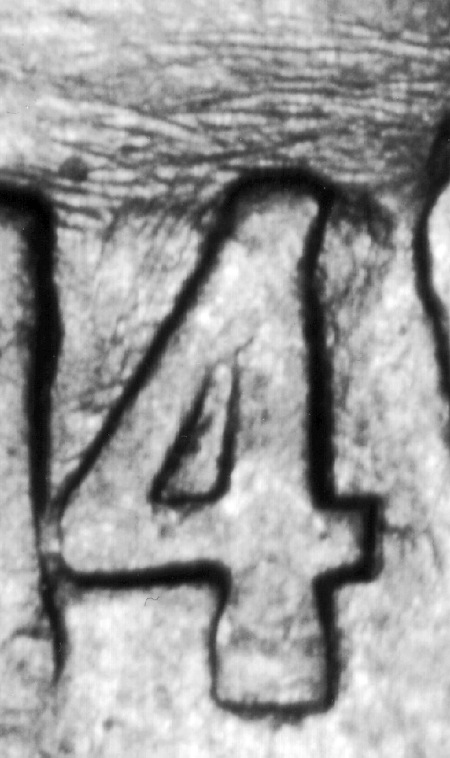


 |
 |
 |
 |
 |
 |
 |
 |
 |
 |
 |
 |
 |
 |
 |
 |
 |
 |
 |
 |
 |
 |
 |
 |
1914 5¢ Possible Overdate Description: A strong horizontal bar runs through the top of the 4 on several working dies. Die Markers: Obverse: Heavy abrasion lines run through and above the top of the 4. Reverse: Will vary with the various working dies involved. Submitted By: Various individuals Cross References: Cherrypickers: FS-05-1914-101 (014.87) Comments: The horizontal bar running through the top of the 4 is believed to be an underlying 3 by some die variety specialists. Although they were included in the 1999 Wexler/Flynn book Treasure Hunting Buffalo Nickels and the subsequent book The Authoritative Reference on Buffalo Nickels, I have always harbored doubts about this variety. Apart from the alleged top of the 3, no other portions of a 3 are visible. Overlays have shown that the horizontal bar is in the right location for the supposed underlying 3, but that neither proves nor disproves that the bar is the top of a 3. Dr. James Wiles, the 20th century die variety attributer for CONECA, shares these doubts and never listed the variety in the CONECA doubled die files. Several P-Mint dies and at least one S-Mint die show this bar through the top of the 4 suggesting that the aberration traces back at least to one working hub making the “variety” more common than if a single working die was affected. Collectors are advised to study the so-called 4/3 overdate and draw their own conclusions. The photos are courtesy of Kevin Flynn.
| ||



